Suez Canal
 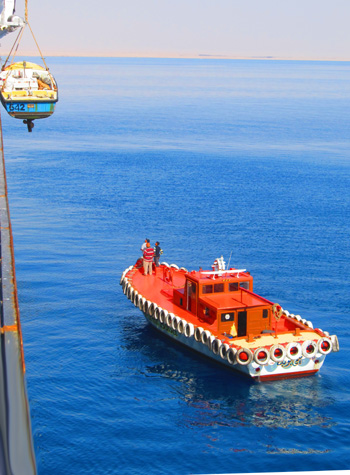
Our Suez transit was rescheduled a couple of times. First we
raced to get here for an 11am entrance a day earlier than planned
and then once we arrived it was changed to 3pm, so we dropped
our anchor and waited. Here the officials came on board via
a crane. This seemed odd to us.
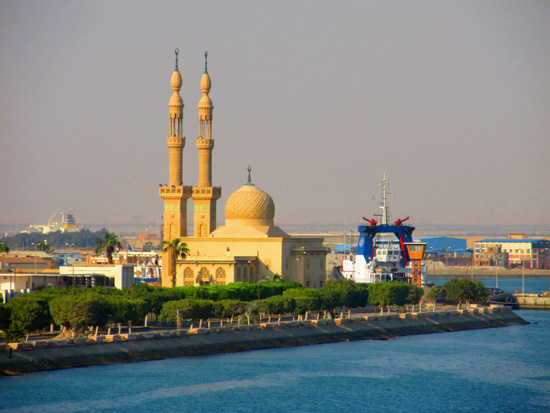
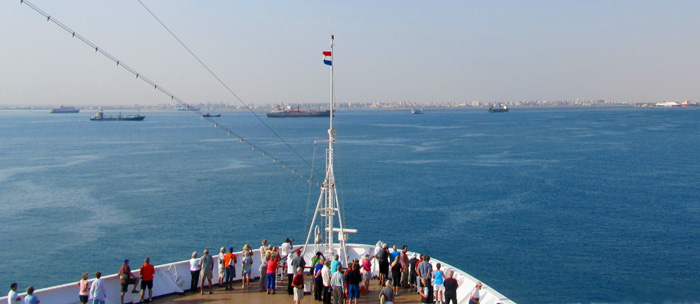
The changing schedules were due to a dredging project in one
of the two lakes, so the ships going in opposite directions
through the canal would not have enough room to pass each other
in the lakes.

One of the many military outposts along the canal. We didn't remember
that wall from 2012.
We'd been through the Suez
in 2012, so click there for photos about half way down the
page.
Starting at 3pm meant that most of the transit
would be in the dark We felt sorry for the first-timers and
some of them were quite angry, but their anger toward the captain
was misplaced. It wasn't his fault.
Dean's Log: Suez
Ashdod, Israel
Israel was not on our original itinerary, but
two stops there and one on Sicily were a substitutes for our
Egypt ports, which had been deemed by the Holland America security
team to be too dangerous for its passengers. Fine with us, we'd
not been to Israel before and would be there on Easter AND Passover.
Talk about crowds! So we opted to avoid Jerusalem and go on
an excursion with Charlotte to Masada and the Dead Sea.

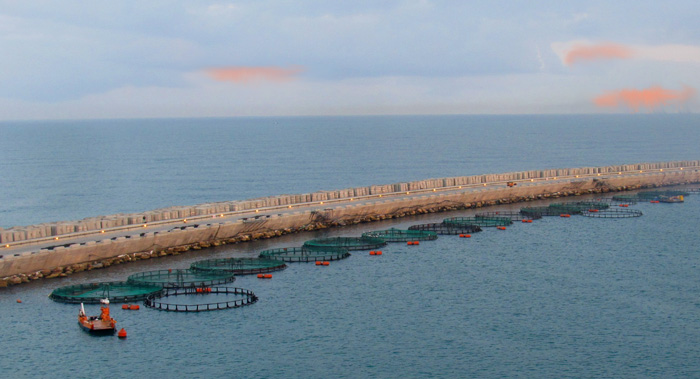
As we sail into the port town of Ashdod, there was a large fish
farm operation behind a long jetty.
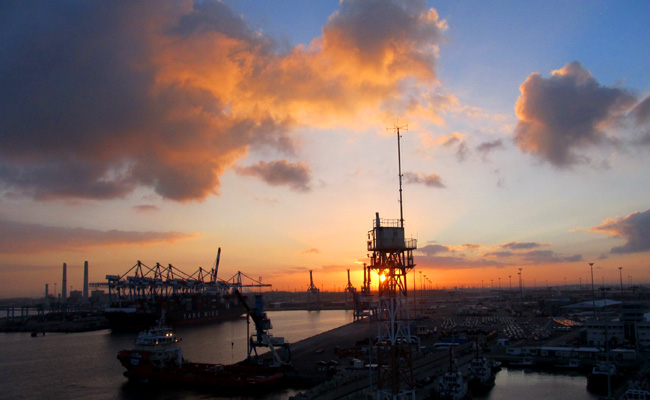
A beautiful sunrise hides behind the machinery of a busy industrial
port.


Charotte briefs Ronnie, our guide in the blue hat. We are in
a separate large van. Our van was not there, so Charotte's group
left us there waiting for a substitute van to make its way into
the port. Meanwhile Ronnie filled us in on her background, while
she was born in Israel, she only spent 6 years there before
her parents moved to western Canada. She's been back in her
birth country for 6 years and is a full-time guide.

Scenery from the van.
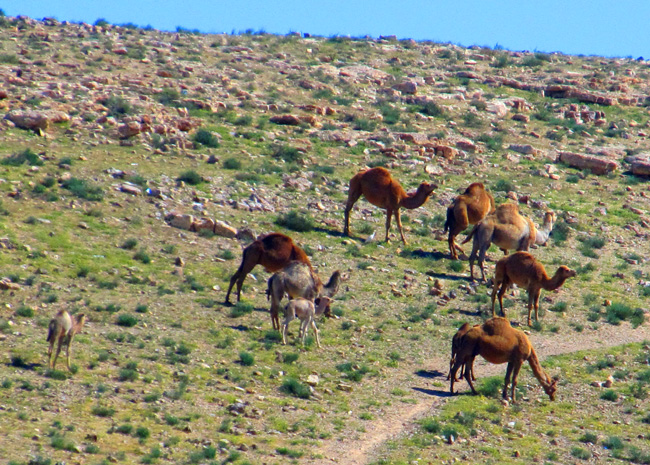
Wild camels...

Again, the sandstone hills reminds us of the American West.

Some ibises on top of a hill from the van.
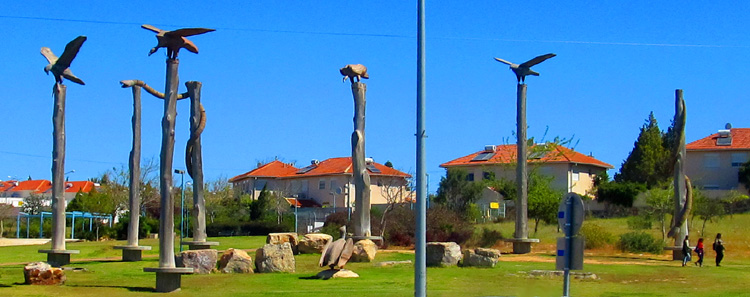
An interesting set of snake and birds of prey sculptures in
a local park next to our potty break stop.
 
Our ride... After the stop, we were losing altitude: at this point
the road is already below sea level.

Even though we were already well below sea level, we were looking
farther down at the Dead Sea.



Masada, a settlement occupied by King Herod on top of a steep-sided
mountain between 37 and 31 BCE. It is an important Jewish history
site. For more details read about Masada
on Wikipedia. We climbed up the Snake Path to the top with
Jack & Sandy. Ronnie had us get in line first for our entrance
tickets and we skipped the 15-minute video that the rest of our
group watched. This way we got a head start so we wouldn't hold
up the tour at the top.

Dean, Jack , and Sandy round a hairpin turn in Snake Path.
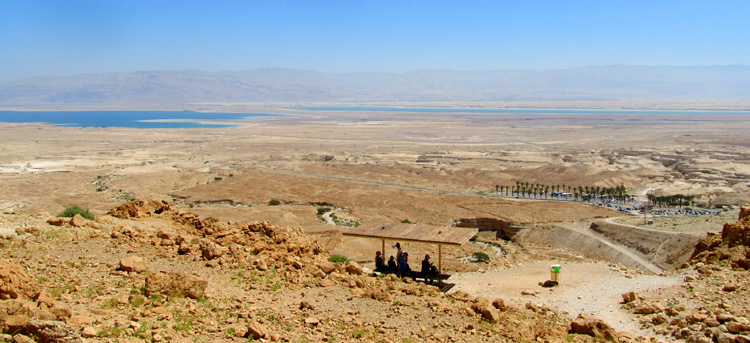
Views from the trail. There were some shelters, but we didn't
stop.
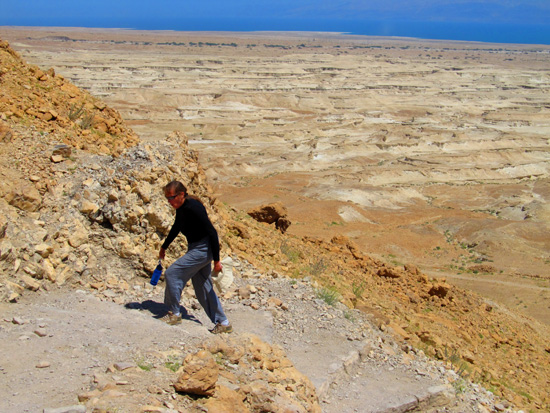
My turtleneck is a thin nylon, but I probably would have been
happier with the white one. It was a tough climb. I was the slowest.
Jack & Sandy were at the top in 40 minutes. Dean waited for
me and I made it up in less than an hour and we were being cheered
on by Ronnie from the top. Everyone else had taken the tram. We
agreed that we'd take it back down, so we wouldn't throw off the
rest of the schedule.


Jack & Sandy. At the top there were various models of the
mountaintop settlement.


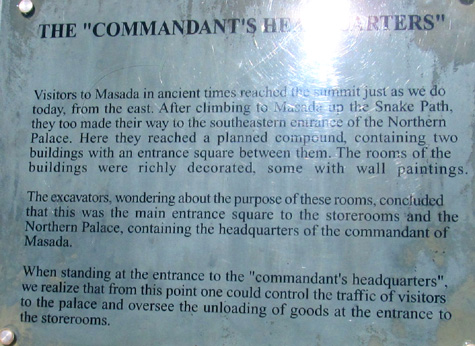
The black line indicates where the newer restoration building
starts. The fresco coverings on the plaster walls are more than
2000 years old.

The scale of the settlement up here is surprisingly large.



The bath house flooring was raised on pillars. They built fires
to warm the water. As with Petra, the water management was crucial
to allowing this community to survive.
 



No doves today, only Tristram's starlings.
|
































































